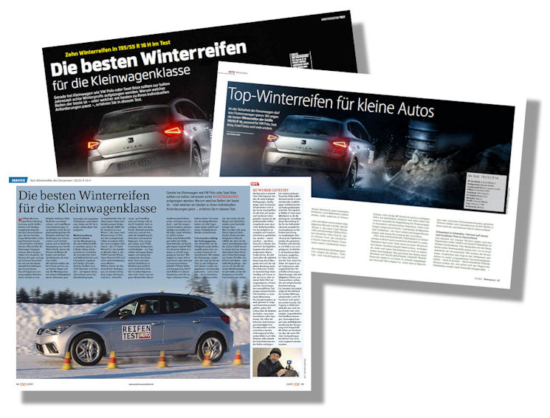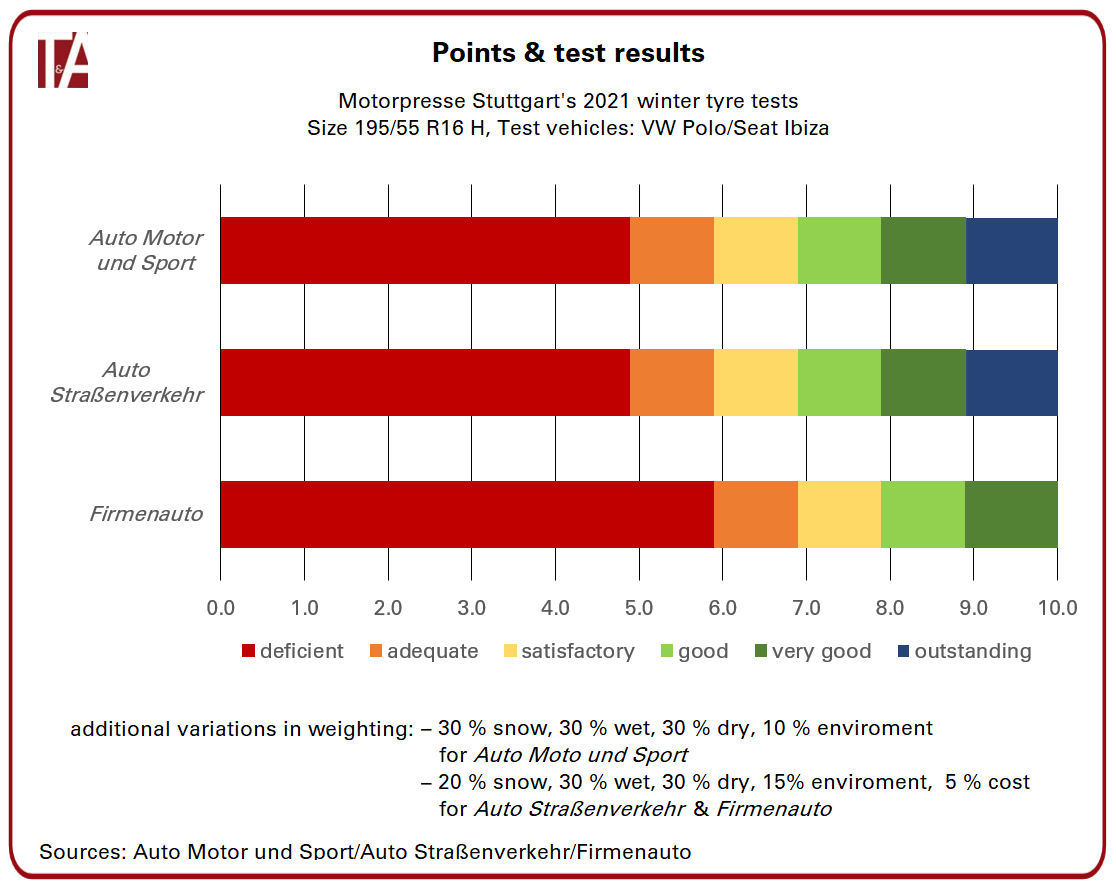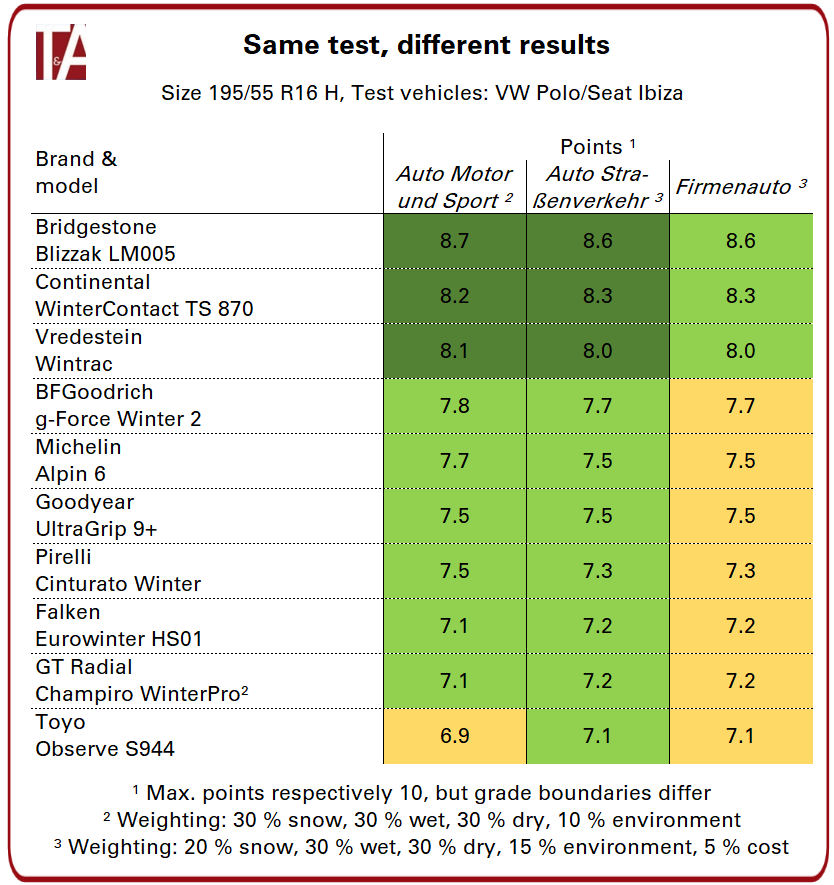Repurposing boosting number of published tyre tests

If you have the impression that we’re seeing more tyre tests these days and they’re appearing more frequently, you’re not mistaken. There are several reasons for this. One is the increasing popularity of all-season tyres. Secondly, tyre manufacturers are increasingly commissioning comparative tests of their own products alongside the competition. The third reason is that tests are often tweaked and presented to the public more than once. This was the case with the most recent winter test from German publication auto motor und sport (ams); it wasn’t long before two suspiciously similar – but not identical – doppelgangers appeared.
Fish and loaves-style, ams publisher Motor Presse Stuttgart turned one tyre test into three, adjusting it to fit the readership of two further automotive titles, Auto Straßenverkehr and fleet-oriented publication Firmenauto. These minor changes had a slight influence upon the results of each respective test.
Different weighting, different results
Whereas the ams test doesn’t include tyre purchase price as a factor contributing to the overall result and instead takes 30 per cent of the score respectively from testing in dry, wet and snowy conditions and the remaining ten per cent from environmental characteristics, the other two titles do look at price. Both Auto Straßenverkehr and Firmenauto accommodate this criterion by reducing the weight of snow testing to 20 per cent of the total. At the same time, they increase weighting of environmental disciplines to 15 per cent, leaving five percent for price.
The three titles differ in how they rate the participating tyres, too. Ams and Auto Straßenverkehr recently added a new highest rating, outstanding, while Firmenauto retains very good as its highest accolade.
None of the tested tyres achieved an outstanding rating, but grade discrepancies nevertheless exist between the titles thanks to the aforementioned differences in weighting. The ams results table lists three tyres as very good, six as good and one as satisfactory. Auto Straßenverkehr rates the same trio as very good and the remaining seven tyres as good, with none receiving a rating of just satisfactory.
Grade influences result, too
What’s more, differences in grading exist between Auto Straßenverkehr and Firmenauto despite both titles’ identical use of test disciplines and weighting. The boundaries between the former’s six grades differ from the boundaries between the latter’s five; as a result, Firmenauto rates three tyres as good and seven as satisfactory.






Comments